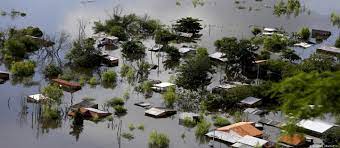Mogadishu
Somali Magazine October 12, 2023-The International Rescue Committee (IRC) is sounding an alarm following heavy flooding in the East Africa region and especially parts of Somalia, particularly Baidoa.
This comes after a warning issued by the Kenyan Meteorological Department (KMD) predicting heavy rainfall across numerous regions of Kenya from October this year through January 2024.
Swift and substantial funding is critical to avert childhood malnutrition, protect livelihoods, and strengthen resilience programming for refugees and host communities in Kenya and riverine populations across Somalia.
In Somalia, the IRC is set to activate a Crisis Modifier under a Nexus Project funded by the German Federal Foreign Office. The Modifier aims to provide crucial support to communities in flood-prone areas along the Hiraan region, to implement interventions geared towards mitigating the impact of flooding, and to deliver crucial aid to communities affected by conflict.
The lack of sufficient funding to address the impacts of El Niño and of preparatory action could exacerbate the strain already placed on the humanitarian system. The 2023 Humanitarian Response Plan for Somalia is currently only 37 percent funded. In Baidoa, the epicentre of a hunger crisis following the last few years of drought, heavy flooding has already caused significant disruption to the city and poses a risk to the safety and well-being of the residents, particularly people currently living in internally displaced (IDP) camps.
107,000 people in Baidoa have been impacted by the floods on October 4. Further flooding is expected across Somalia, which is estimated to impact 1.2 million people who reside in riverine areas. This adds to the on-going humanitarian crisis in Somalia where more than 3.7 million people are experiencing extreme hunger. This number is expected to increase to 4.3 million between October and December 2023, in part due to the impact of flooding caused by El Niño.
In Kenya, it’s predicted that the impact of floods could leave more than 2 million people in need of some form of direct assistance. Of this number, around 600,000 are anticipated to be refugees, exacerbating the existing humanitarian crisis in the country, where 4.5 million people are currently facing hunger.
IRC Regional Vice President for East Africa Kurt Tjossem, said “We are operating in refugee camps and camps for displaced people where vulnerable populations are already grappling with disease outbreaks, and the healthcare system is stretched to its limits. After three years of devastating drought, this rainfall may initially be seen as a blessing for farmers and pastoralists in both Somalia and Kenya, however, it has the potential to quickly turn into a disaster as we see in Baidoa, with widespread flooding anticipated in the areas where the IRC operates.”
Since October 2022, Kenya’s arid northern region has been grappling with a cholera outbreak triggered by a prolonged and severe drought, resulting in over 12,000 cases and 202 deaths as of the end of last month.
Disrupting rainfall patterns will severely affect agriculture, rural livelihoods, and food security, placing farmers and pastoralists at the forefront of its impact.
In addition to supporting communities through emergency response, these floods highlight the need for anticipatory action measures, which must focus on safeguarding food, crops, water, and infrastructure to protect the food supply and support communities to prepare and respond to the anticipated flooding.
He further added that, “We all remember the last El Niño in 2015/16, which resulted in landslides, flash floods, and building collapses. If immediate measures are not taken, the consequences to lives and livelihoods could be dire.”
The IRC calls for prepositioned, flexible, multi-year financing to strengthen the El Niño response. In Kenya and Somalia, the IRC is conducting awareness-raising campaigns to prevent disease outbreaks; delivering critical supplies including hygiene and cash; enhancing water and hygiene infrastructure in anticipation of the floods; and deploying mobile health units to provide essential health services.

